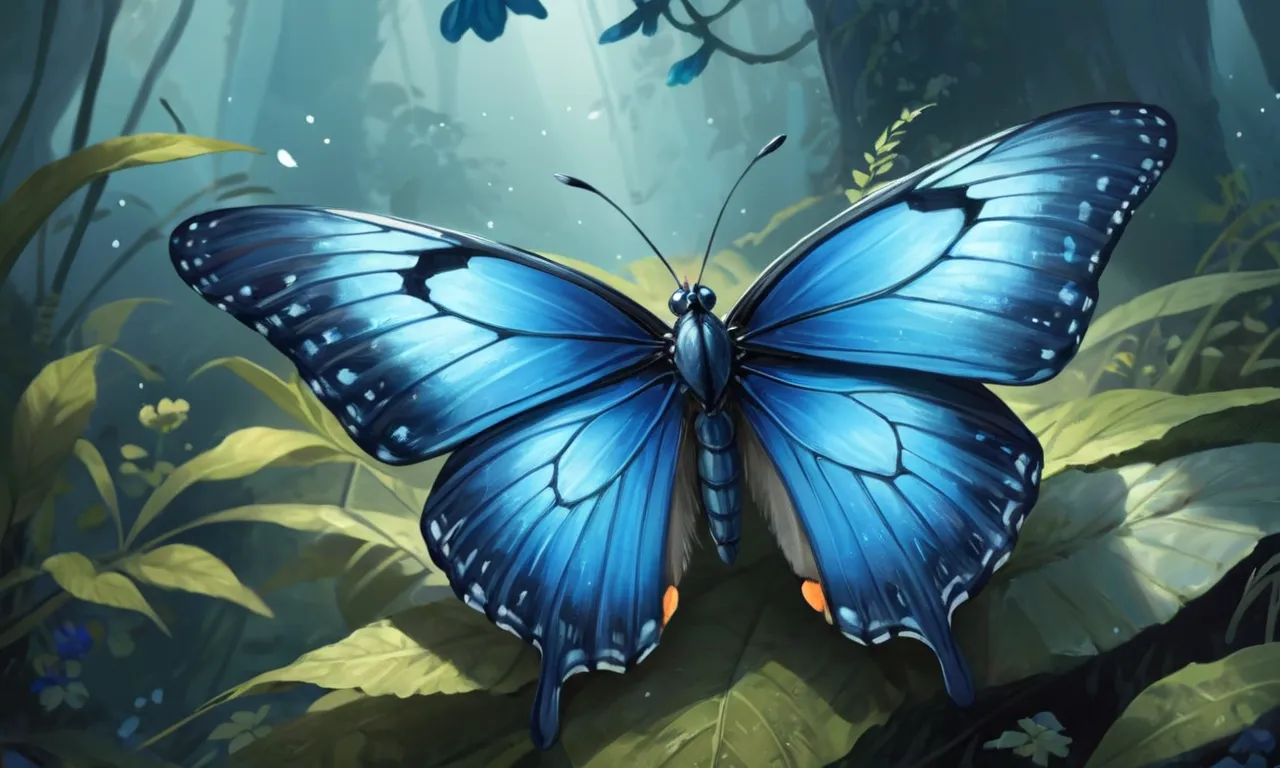The Blue Butterfly: A Symbol of Tranquility and Transformation

The blue butterfly has captured the hearts and minds of people around the world for centuries. These beautiful creatures are not only stunning to look at, but they also hold significant meaning in various cultures and symbolize different things. In this blog post, we will delve into the depths of the blue butterfly’s meaning, its life cycle, and its impact on the environment and human lives.
The Meaning Behind the Blue Butterfly
The blue butterfly holds special significance in many cultures, each with their own unique interpretation of what it represents.
Celtic Culture:
In Celtic culture, the blue butterfly is believed to be a symbol of tranquility and transformation. It is often associated with the goddess Danu, who was known for her power to heal and protect. The Celts believed that if you encountered a blue butterfly, it was a sign that a period of change or healing was about to begin in your life.
Native American Culture:
For many Native American tribes, the blue butterfly symbolizes the spirit of the ancestors. They believe that when a blue butterfly visits someone, it is a message from their deceased loved ones, guiding them through difficult times and reminding them of the strength they possess within themselves.
Eastern Cultures:
In Eastern cultures, particularly in China and Japan, the blue butterfly is considered to be an omen of good luck and prosperity. It represents growth, renewal, and the harmony between nature and humanity.
The Life Cycle of a Blue Butterfly
The life cycle of a blue butterfly can be divided into four main stages: egg, larva (caterpillar), pupa (chrysalis), and adult butterfly.
Egg: A female blue butterfly will lay her eggs on the underside of leaves, usually on host plants where the caterpillars will feed once they hatch. The eggs are very small and often blend in with their surroundings to protect them from predators.
Larva (Caterpillar): Once the eggs hatch, the larvae (caterpillars) emerge and begin feeding on the leaves of their host plant. They grow rapidly during this stage, shedding their skin several times as they molt.
Pupa (Chrysalis): When the caterpillar reaches maturity, it will find a secure spot to attach itself and form a chrysalis around its body. During this stage, the caterpillar undergoes a remarkable transformation, changing its shape, color, and structure as it metamorphoses into an adult butterfly.
Adult Butterfly: After several weeks or months within the chrysalis, the adult blue butterfly will emerge, ready to spread its wings and begin its journey through life.
The Impact of Blue Butterflies on the Environment and Human Lives
Blue butterflies play a crucial role in maintaining the balance of ecosystems and have a profound impact on human lives as well.
Pollination:
As pollinators, blue butterflies help to transfer pollen from one flower to another, allowing plants to reproduce and produce fruit or seeds. This process is vital for many species of flowers and fruits, including those that we rely on for food.
Pest Control:
Some species of blue butterfly larvae are natural predators of harmful insects, such as aphids and caterpillars. By controlling the population of these pests, blue butterflies help to protect crops and maintain the health of ecosystems.
Inspiration for Art and Literature:
Throughout history, blue butterflies have been a source of inspiration for artists, poets, and writers alike. Their beauty and symbolism have inspired countless works of art, literature, and music that continue to captivate people around the world.
Education and Conservation:
The study of blue butterflies has provided scientists with valuable insights into the process of metamorphosis and the delicate balance between species in ecosystems. This knowledge has helped to inform conservation efforts aimed at protecting these beautiful creatures and their habitats.
Conclusion
The blue butterfly is a fascinating creature that holds deep meaning for many cultures and represents tranquility, transformation, and harmony with nature. From its incredible life cycle to its vital role in pollination and pest control, the blue butterfly plays an essential part in maintaining the balance of ecosystems and inspiring human creativity. By understanding and appreciating these remarkable creatures, we can work together to ensure their survival for generations to come.
Facts about Blue Butterflies:
- There are over 17,500 species of butterflies worldwide, with only a small percentage being blue.
- Blue butterflies often have specialized adaptations, such as reflective scales on their wings, which help them to blend in with their surroundings and avoid predators.
- Some species of blue butterfly can migrate long distances, traveling thousands of miles during their lifetime.
- The life span of a blue butterfly varies depending on the species but is typically between two weeks and several months for adult butterflies.
- Blue butterflies are important pollinators, contributing to the reproduction of many plants and flowers.






